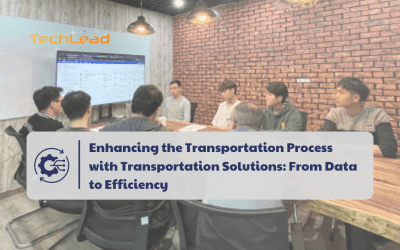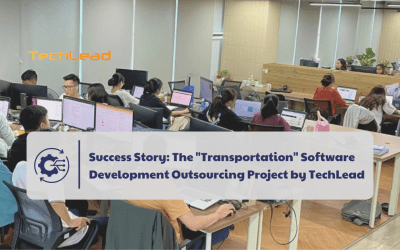Node.js is an important component in web application development thanks to its unique architecture and capabilities. This blog post explores the pros and cons of Node.js web application programming and everything you need to know.
Introducing Node.js web application development
In the realm of web development, Node.js stands as a transformative force, empowering developers to build scalable, high-performance, and real-time applications with the versatility of JavaScript. This open-source, cross-platform JavaScript runtime environment has garnered immense popularity within the open-source software community, fundamentally altering the landscape of web application development.
At its core, Node.js serves as an execution environment for JavaScript code outside of a web browser. This revolutionary concept enables developers to leverage JavaScript for both front-end and back-end development, fostering a unified and streamlined development process.
Unlike traditional web servers that rely on blocking I/O operations, Node.js employs an asynchronous, event-driven architecture. This approach empowers. It to handle multiple concurrent requests with remarkable efficiency, making it an ideal choice for real-time applications and data-intensive workloads.
Node.js’s influence on web application development is undeniable. Its asynchronous, event-driven architecture has proven to be a game-changer, particularly for real-time applications and data-intensive workloads. It has empowered developers to build scalable, high-performance applications that can handle a massive volume of concurrent users and data requests.
Node.js has revolutionized the landscape of web application development, offering a compelling alternative to traditional server-side technologies. Its open-source nature, coupled with its asynchronous, event-driven architecture, has made it a favorite among developers worldwide. As it continues to mature and evolve, its impact on web application development is poised to grow even more profound, shaping the future of the web for years to come.
Advantages of Web Application Development with Node.js

Node.js has gained significant popularity in web application development due to its inherent advantages. These features make it a preferred choice for modern web applications that demand efficiency and robustness.
1. High Performance
One of the standout benefits of Node.js is its ability to deliver high performance. This is largely attributed to its non-blocking, event-driven architecture, which allows it to handle multiple concurrent connections efficiently.
Unlike traditional server-side technologies that use threads to handle requests, it operates on a single-threaded event loop model. This architecture enables to handle a large number of simultaneous connections with minimal overhead, resulting in faster response times and enhanced throughput for web applications.
2.Excellent Scalability
Scalability is another key advantage of Node.js. By leveraging its asynchronous and non-blocking nature, it can efficiently scale horizontally across multiple cores and servers. This capability is crucial for applications experiencing rapid growth or unpredictable spikes in traffic. It applications can easily be scaled by adding more nodes to distribute the workload, thereby ensuring consistent performance even under heavy loads.
3.Single-Threaded, Asynchronous Processing
Node.js’s single-threaded, event-driven architecture plays a pivotal role in optimizing response times for web applications. By handling requests asynchronously, It can process multiple requests concurrently without blocking the execution thread. This approach is particularly advantageous for real-time applications such as chat platforms or streaming services, where responsiveness and low latency are critical.
4.Strong Community Support
Node.js benefits from a vibrant and active community of developers and contributors. This large community fosters continuous innovation, rapid development of new features, and robust support through extensive documentation, tutorials, and open-source libraries. Developers can leverage this rich ecosystem to streamline development processes, access best practices, and troubleshoot issues effectively, enhancing productivity and accelerating time-to-market for Node.js-based applications.
In conclusion, Node.js stands out in web application development for its high performance, excellent scalability, and strong community support. These advantages make it a compelling choice for developers aiming to build responsive, scalable, and efficient web applications that meet the demands of modern digital environments. By harnessing Node.js’s capabilities, businesses can achieve optimized performance, scalability, and maintainability for their web applications, thereby gaining a competitive edge in the dynamic landscape of web development.
Limitations of Node.js Web Application Development
1. Inefficient Handling of CPU-Bound Tasks:
Node.js, renowned for its non-blocking, event-driven architecture, excels in handling I/O-bound tasks but faces challenges with CPU-bound operations. Due to its single-threaded nature and event loop mechanism, it struggles when executing tasks that heavily rely on CPU processing.
Unlike multi-threaded environments where CPU-bound tasks can be parallelized across multiple cores, Node.js runs on a single thread, making it less efficient for such computations. This limitation can lead to performance bottlenecks and reduced responsiveness in applications requiring intensive computational operations, such as complex mathematical calculations or heavy data processing tasks.
2.Callback Management and Error Handling Complexity:
One of the notable challenges in Node.js development is the management of callbacks and the inherent complexity in error handling. Asynchronous programming in it relies heavily on callbacks to manage control flow and handle results from asynchronous operations. While callbacks facilitate non-blocking I/O and promote responsiveness, they can introduce callback hell—a situation where nested callbacks become deeply nested and difficult to manage, leading to code that is hard to read, maintain, and debug.
Moreover, error handling in Node.js asynchronous code requires careful attention to prevent unhandled exceptions and ensure robust application stability. Developers must diligently handle errors at each callback level, which increases the complexity of code maintenance and debugging, potentially affecting application reliability and user experience.
3.Heavy Dependency on Third-Party Libraries and Modules:
Node.js benefits from a vibrant ecosystem of third-party libraries and modules available via npm (Node Package Manager), offering developers extensive functionality and pre-built solutions for various application needs. However, the heavy reliance on third-party dependencies can introduce challenges related to code security, compatibility issues, and maintenance overhead.
While these libraries accelerate development and provide specialized features, they also pose risks such as security vulnerabilities or sudden changes in APIs that can disrupt application functionality. Managing dependencies effectively involves regular updates, monitoring for vulnerabilities, and maintaining compatibility with evolving it versions, ensuring a balance between leveraging external resources and mitigating associated risks.
In summary, while Node.js offers significant advantages in terms of scalability, performance with I/O-bound tasks, and community support, developers must carefully consider its limitations in handling CPU-bound tasks efficiently, managing callbacks and error complexity, and navigating dependencies on third-party libraries.
Awareness of these challenges empowers developers to make informed decisions, adopt best practices, and optimize their Node. applications for enhanced performance, reliability, and maintainability in diverse software environments.
Appropriate Use Cases of Node.js

1. Developing real-time applications such as chat applications
Node.js is exceptionally well-suited for developing real-time applications such as chat applications due to its event-driven, non-blocking I/O model. Real-time applications require frequent communication between the server and clients, often involving simultaneous connections and data streaming. Node.js excels in handling these scenarios efficiently, leveraging its asynchronous nature to manage multiple concurrent requests without blocking other operations.
This capability ensures low-latency communication, crucial for delivering seamless chat experiences where messages need to be delivered and displayed instantly across multiple users. Moreover, Node.js’s lightweight and scalable architecture allows developers to easily scale up or down based on application demands, making it an ideal choice for building robust and responsive real-time chat applications.
2.Microservices and server-side applications
Node.js has gained popularity in the realm of microservices architecture and server-side applications due to its lightweight, modular approach and ability to handle a large number of concurrent connections efficiently. Microservices architecture involves breaking down large, monolithic applications into smaller, independent services that can be developed, deployed, and scaled independently.
Node.js’s single-threaded, event-driven architecture makes it well-suited for microservices, where each service can operate independently and communicate through lightweight APIs or messaging protocols. This allows organizations to achieve greater agility, scalability, and resilience in their applications, as each microservice can be optimized and scaled according to its specific workload.
In server-side applications, Node.js excels in handling I/O-bound tasks, such as data streaming, file operations, and network interactions. Its non-blocking I/O model ensures that the server remains responsive even under heavy loads, efficiently managing concurrent requests without unnecessary resource consumption.
This makes Node.js an excellent choice for building backend services that require high performance, real-time data processing, and seamless integration with other systems or databases. Additionally, Node.js’s extensive ecosystem of modules and libraries simplifies the development of server-side applications, offering developers a wide range of tools and frameworks to streamline development and deployment processes.
Overall, it stands out as a versatile and powerful platform for developing real-time applications like chat applications and for implementing microservices and server-side applications, offering developers robust solutions to meet modern application requirements effectively.
Conclusion
In conclusion, Node.js offers significant advantages in web application development, such as high performance and scalability due to its non-blocking, event-driven architecture. It facilitates real-time applications and microservices, leveraging a robust ecosystem and strong community support. However, It exhibits limitations in handling CPU-bound tasks efficiently and managing callback complexities, which may impact application performance under certain conditions.
Despite these drawbacks, Node.js remains a compelling choice for developers seeking to optimize application performance and utility in suitable projects. Its versatility and extensive library of third-party modules make it a viable option for building responsive and scalable web applications, thereby enhancing overall development efficiency and effectiveness. Developers are encouraged to carefully assess project requirements and consider. It where its strengths align with project goals, ensuring optimal outcomes and sustainable development practices.
Learn more about Node.js here: https://nodejs.org/en/learn/getting-started/how-to-install-nodejs
Contact TechLead today for the best software solutions consultation that helps accelerate your business processes!
Contact information: https://www.techlead.vn
TECHLEAD – Leading technology solution for you!
Hotline: 0372278262
Website: https://www.techlead.vn
Linkedin: https://www.linkedin.com/company/techlead-vn/
Email: [email protected]
Address: 4th Floor, No. 11, Nguyen Xien, Thanh Xuan, Hanoi





